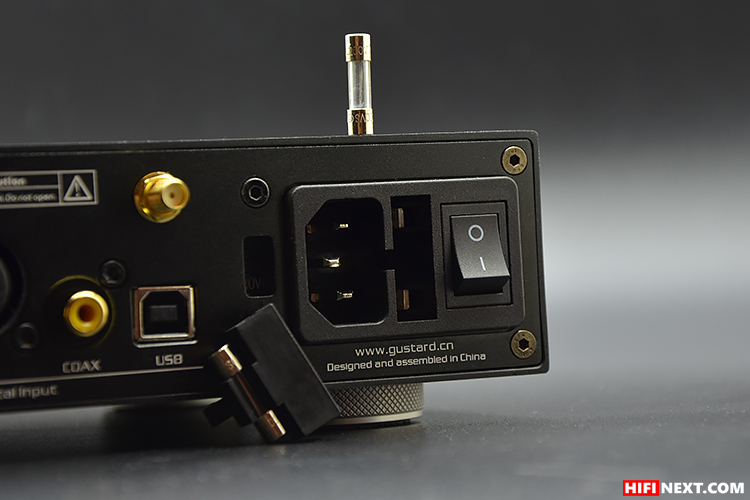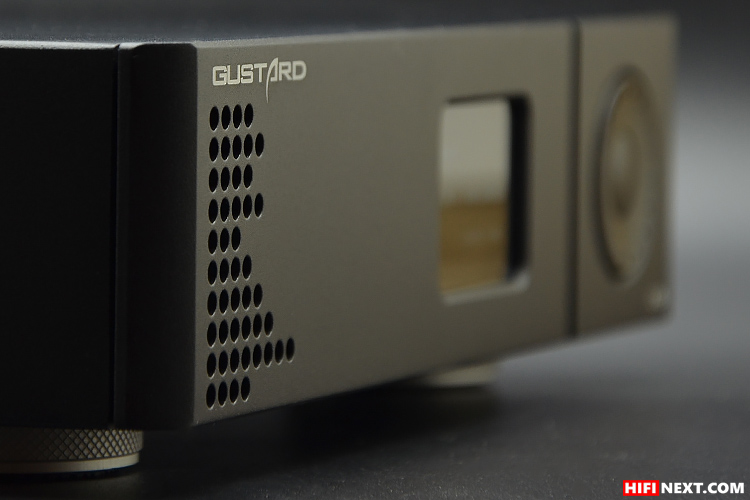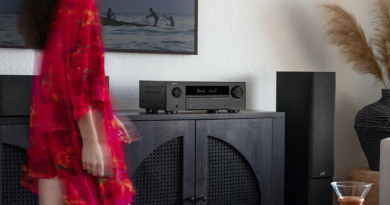Gustard X16 DAC review
A well known Chinese manufacturer Gustard has released a new stationary fully balanced X16 DAC, built on a pair of the latest ES9068AS chips with a CPLD processor. ES9068AS chips has built-in hardware MQA bitstream decoding. Until now, this was done before the DAC, but now the functionality is core to the DAC chip itself. The USB receiver is also on the new XMOS XU216 chip. The I/V converter is based on high-performance OPA1612a operational amplifiers. VISHAY MELF high-precision components, which are used in key parts of the Gustard X16 analog circuit, define this DAC as a high-level product.
And yes, in addition to the X16 DAC, Gustard release a new H16 headphone amplifier, which in our opinion can provide one of the best experiences today in the price category below $1k for complete headphone system. Be sure to read about this bundle.

But going back to X16, everything described above sounds good, especially since the measurements look even better than technical specifications on paper. We will not stop on measurements, almost all of today’s devices give excellent indicators, but since it’s mentioned Gustard X16 shows it most perfect ever. It is important for us what kind of product actually turned out. What can you really hear and feel for a relatively small amount for such a set described above. And $499 for such characteristics today on the market is definitely much less than of competitors (well, or a little more expensive, if you compare for example with the latest DAC from SMSL SU-9 for $440. Only $60 difference, but at the same time Gustard X16 flies into space according to all indicators). Let’s take a closer look.
Unboxing

First, a few words about package contents. Perhaps, we would not talk about this, because today almost all manufacturers offer a minimum set in their packages. Anyway, there is no power cable in the package with Gustard X16. Obviously, the manufacturer hints in this way that it would be good to use some higher quality cable, than that is usually we seen in standard packaging. And for a device of this level and its price it really makes sense. Anyway, you should know when you buying X16, you should have your own quality power cable. It was also unexpected to see in box a CD with drivers. In any case, we just downloaded latest driver directly from the Gustard website.
Design, Controls & Connectivity

Laconic, strict and impressive black metal case is slightly larger than the average size for the DAC of this segment. Its size and weight (2.5kg) gives it solidity, when you take it in hands, you immediately understand that it something serious. The body consists of a metal sheet without seams, massive round legs and a plastic front panel. It is CNC polished many times and then painted with anodizing method. And the stage ends with sandblasting to obtain a smooth effect. In addition, this metal can effectively shield interference.



The display is simple one-color, displays everything you need. The menu is also not very diverse, but you don’t need more than that. There are 6 items here: pcm filter, nos mode, bt power, phase invert, display, brightness.
An interesting feature of the device is the ability to reverse phase of the signal. You can enable this in the “phase invert” menu. As a result, any phase is reversed 180 degrees. This function will be useful when listening to phonograms with the phase reversed during recording. Leave this feature disabled of course.

The volume wheel is made of quality dense plastic, the entire front panel is made of the same. Nothing squeaks or sags, there are no questions here. As you spin the volume wheel, you will hear relay clicks at each step as befits a device of this level.

On the back: Line out XLR, line out RCA, Optical input, IIS-H input, AES input, coaxial input, USB input, Bluetooth antenna connector, 220V/110V switch, power block with fuse compartment.
Inside. Functions and features

At the heart of the new Gustard X16 a pair of latest ESS Sabre ES9068AS chips, this should allow to provides a very rich and precise reproduction as claims chip manufacturer (THD+N of -120dB and a dynamic range of 128dBA). ES9068AS allow hardware decoding of AQA files and support high-resolution files up to 32bit 768kHz PCM and DSD512.

Nearby we see Altera MAX II CPLD. This provides perfect clock signal handling for extremely low jitter, while offering audio signal correction and enabling DoP decoding.

Slightly higher on the board two Accusilicon AS318-B clocks are also present to provide an extremely accurate clock signal.

The USB-B input is associated with a high-performance XMOS XU216 chip. It supports PCM files up to 32bit 768kHz, DSD files up to DSD512 and 384kHz MQA files.
And of course, Gustard X16 can receive audio streams via Bluetooth. Board equipped with a Qualcomm CSR8675, this chip supports the SBC and AAC codecs, but above all aptX, aptX LL, aptX HD and LDAC for a stable transmission and a more than convincing reproduction.
The other components have the same quality, this is a low-distortion, low-noise and high-performance operational amplifier OPA1612 AOPs on the I/V conversion circuit. Vishay and MELF resistors, TPS7A47 and TPS7A33 linear regulators. Provides power to all of this custom made toroidal transformer made specifically for the device.
As it was already written the X16 is capable of decoding MQA (Master Quality Authenticated) files via its Coaxial, AES, Optical and I2S inputs. Just to remind: MQA allows sound reproduction quality to be as close as possible to the original recording.
We would also want to note that when you receive a parcel with Gustard product (in fact, this applies to many manufacturers), you may find that your device simply does not turn on. It’s all about the fuses, often when shipping the box is shaken, and this sometimes shifts the fuse inside the power unit, which will not allow your device to turn on.

Just open fuse compartment and put it back (thanks to Gustard they put another spare).
But what can all this give in practice? Just let’s hear it.
Sound

Among modern DACs of the middle and high class, a very common approach with analytical, extremely informative character of reproduction, which each manufacturer tries to solve within their budget and circuit elements. It is curious that Gustard, apparently relying on his rich experience in creating audio components for audiophile, does not pursue super-analyticity: there is no super-detail, hyperscale and monstrous image of the music scene, there is no attempt to show every detail in all its glory. But when listening X16, you literally immediately understand that the sound is balanced, harmonious, everything is in place and everything is enough: details, space and temperament of performance. But in any bundle that we tested with X16, along with the elegant musicality, you can feel the signature style of the gustard.
The absolute neutrality of the playback is shifted to a light warm zone, giving the sound more comfort and emotional saturation. Mid-range tones transmitted with exquisite details, but without over-nuance, when small details begin to distract attention. We liked the deep and relief bass range which creates Gustard X16.
Hi-range is transparent and well-designed. Gustard X16 delivers this in a calm manner with a slight haze and some softening of the sharp points. The scale of the musical scene does not acquire a gigantic scope, but the X16 perfectly shows the “air” between performers, clearly separating them from each other. Excellent drawing of images, preserved across the entire volume, not limited only to the near plans. Gustard X16 maby slightly highlights vocal, without breaking the correctness of the original composition. In our opinion, this is even better showing the separation of the scene, in live concert performances this is especially felt.
Middle range is shown with a special charm, while the background of this spectr are paid no less attention, the contrast of picture there is also high. Especially at the edges of the mid-range sound spectrum, the attack softens but does not fade – all this very delicate and musical. Musical compositions with serious sound dynamics, a large set of instruments and a complex music score are performed with the correct placement of accents and very airy. At the same time, acoustic music of small groups of artists is performed with beautiful inspiration.
Conclusion

Certainly, the new chips from ESS do their job perfectly. At the same time, Gustard managed to present them properly prepared and at a really nice price for this level. It is difficult to name competitors in this price today. For example, the latest SMSL or Topping DACs don’t offer anything like X16: either a little cheaper and much worse, or much more expensive and almost the same in the best case. However, Gustard managed to find a middle ground and their own sound emphasis, and we really like it.
One of the best DAC in its class and price for today.
★ “Our choice” and five stars.
Specifications
Amplitude frequency response: 20-20kHz/+-0.08dB
DNR: >126dB
Crosstalk: -130dB@1kHz
THD+N: <0.00010% 1kHz
IMD: <0.0004%@-1dBFs
RCA Output level: 2Vrms VOLUME 00dB)
Output impedance 100 ohms
XLR Output level: 4Vrms(VOLUME 00dB)
Output impedance 300 ohms
AC Power supply: AC 115V/230V 50/ 60Hz
Power consumption:<15W
Dimensions:220mm50mm*170mm
Weight: 2.5Kg
Official site: www.gustard.cn




